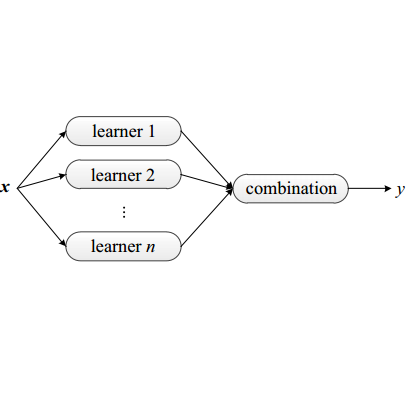Specific emitter identification (SEI) is a highly potential technology for physical layer authentication that is one of the most critical supplement for the upper-layer authentication. SEI is based on radio frequency (RF) features from circuit difference, rather than cryptography. These features are inherent characteristic of hardware circuits, which difficult to counterfeit. Recently, various deep learning (DL)-based conventional SEI methods have been proposed, and achieved advanced performances. However, these methods are proposed for close-set scenarios with massive RF signal samples for training, and they generally have poor performance under the condition of limited training samples. Thus, we focus on few-shot SEI (FS-SEI) for aircraft identification via automatic dependent surveillance-broadcast (ADS-B) signals, and a novel FS-SEI method is proposed, based on deep metric ensemble learning (DMEL). Specifically, the proposed method consists of feature embedding and classification. The former is based on metric learning with complex-valued convolutional neural network (CVCNN) for extracting discriminative features with compact intra-category distance and separable inter-category distance, while the latter is realized by an ensemble classifier. Simulation results show that if the number of samples per category is more than 5, the average accuracy of our proposed method is higher than 98\%. Moreover, feature visualization demonstrates the advantages of our proposed method in both discriminability and generalization. The codes of this paper can be downloaded from GitHub(https://github.com/BeechburgPieStar/Few-Shot-Specific-Emitter-Identification-via-Deep-Metric-Ensemble-Learning)
翻译:具体排放物识别(SEI)是一种极具潜力的物理层认证技术,是高层认证最关键的补充之一。SEI以无线电频率(RF)特征为基础,来自电路差异,而不是加密法。这些特征是硬件线路的固有特征,难以伪造。最近,提出了各种深层次学习(DL)基于常规SEI的常规方法,并实现了高级性能。然而,这些方法是针对具有大量RF信号样本供培训使用的近身情景提出的,通常在有限的培训样本条件下表现不佳。因此,我们侧重于少数SEI(FS-SEI),用于通过自动依赖性监视(ADS-B)信号的无线电频率(RF)特征。这些特征是难以伪造的硬件线路的固有特征。最近,提出了基于深层次指数学习(DMEL)的各种基于深度学习(DLL)的常规 SEII方法,具体地说,这些方法基于具有复杂革命性神经网络(CVCNN)的衡量标准学习,这些特征通常在内部类型纸质的距离和分级之间提取性特征。SIS-real-real-revia-revia-revia-ration ration ration ral ration ration ral ration ral ral 5,这组的精确度是我们一般的模型的精确度方法,后,如果在普通的精确度的精确度(Sal-ral-ral-ral-ral-ral-ral-rmaxxxxxxxxxxxxxxxxxxxxxxxxxxxxxxxxxxxxxx xxxxxxxxxxxxxxxx,后,后,则以可实现了我们的准确性,则以在正常法系的精确法系的精确法系的精确法系的精确性,后,后,则以可实现的精确法系的精确法系的精确法系的精度,则系的精确法系系系的精确值的精确值的精确值的精确值的精确值的精确值的精确值比比比比比。



